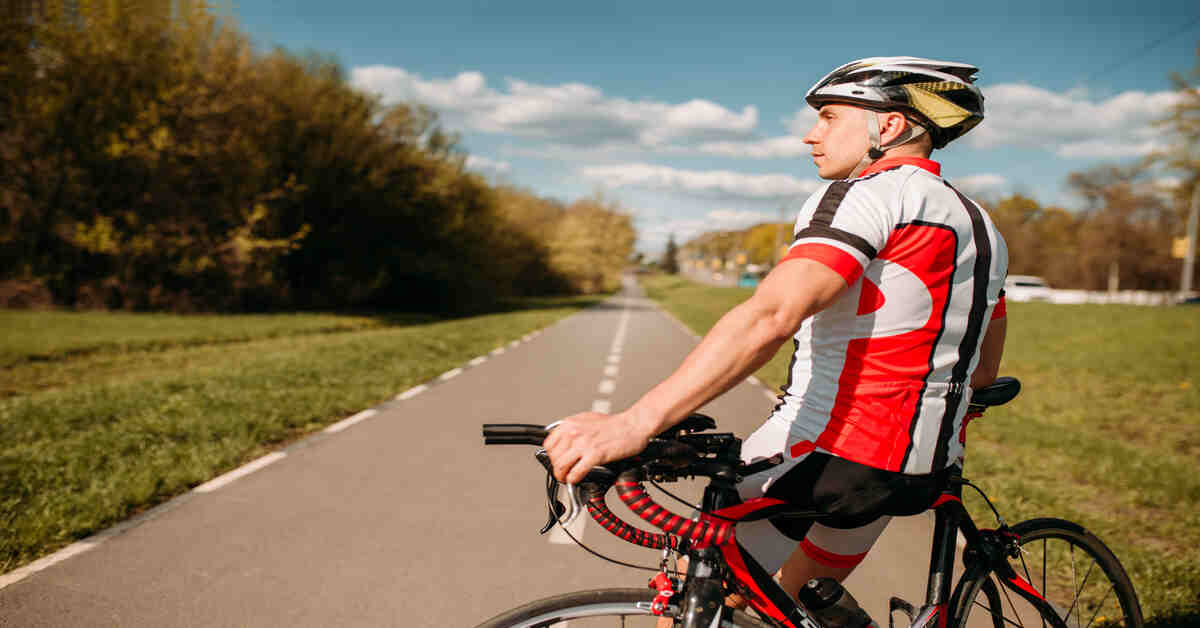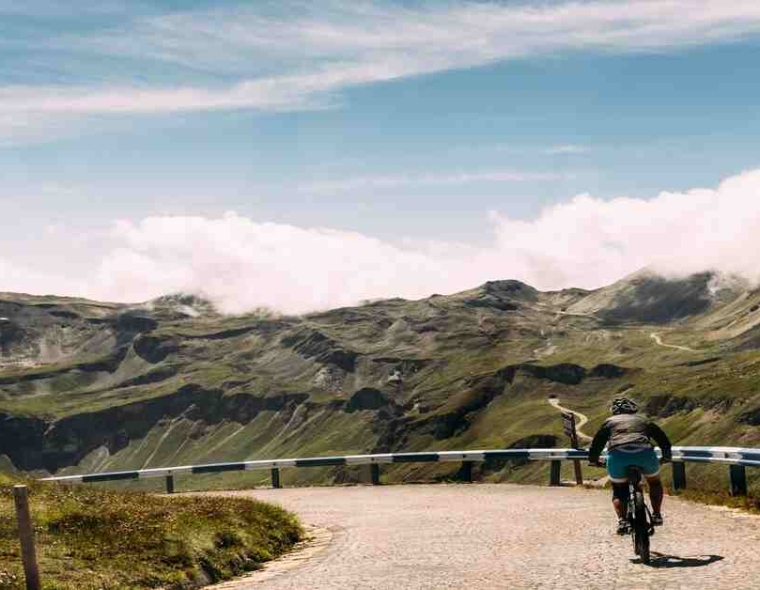Cycling is a great way to have fun and keep fit, enjoy the environment and cut down on the carbon footprint. There is however a degree of risk associated with the pleasure of cycling. Safety is therefore an issue that must always be given first priority by the cyclists, both the professional and the novice. Together with this extensive guide, you will find the tips to be the best tips to keep you safe when riding. These measures will help you to have a relaxing and normal time cycling.
1. Wear a Helmet
The most basic protection of cyclists is the wearing of a helmet. Studies reveal that helmets may lessen the chances of injuries to the head by 85 percent. The helmet to purchase should be one that is safe as determined by organizations such as the Consumer Product Safety Commission (CPSC) in the U.S. or relative organizations in your country.
How to Fit Your Helmet Properly
- Position: This is important to make sure that your helmet is on your head but not tilted back. This ought to be tight yet not too tight.
- Straps: Make the side straps create a shape of the V directly under the ears. It is important that the chin strap is tight so that you can just fit one or two fingers between your chin and the strap.
- Test: Shake your head; the helmet is not to move. In case it does, re-adjust the straps. Make sure that you fasten the helmet before each ride.
2. Be Visible
The visibility is essential in cycling particularly during the low light periods. The bright and reflective clothing you put on can really help to make you more noticeable to the drivers and other road users. These are the strategies that can be used to enhance your visibility:
- Dressing: Wear bright colors such as fluorescent yellows, oranges, and green. Several cycling jackets and jerseys come in such colors.
- Lights: Bang your bike with front and rear lights. Bright white headlight in front and red tail-light in the rear are necessary in night rides. Flashing lights can be considered.
- Reflective Accessories: Pin reflective tape on your bicycle and use reflective clothing or reflective accessories such as arm bands or vests. These minor additions, often found in a must have bike accessories guide, are able to create a great difference in low-light situations.
3. Follow Traffic Laws
The bicycle riders should abide by the traffic regulations governing motor vehicle drivers. It is important to get acquainted with local traffic rules in order to ride safely. Key rules include:
- Stop Signs and Signals: Treat stop signs as you would in a car, coming to a complete stop. Always yield to pedestrians at crosswalks.
- Right of Way: Understand when to yield to vehicles and pedestrians. For example, at intersections, vehicles on the road typically have the right of way over cyclists in bike lanes.
- Bike Lanes: Use bike lanes when available, and never ride against traffic. Riding in the same direction as traffic improves visibility and safety.
4. Use Hand Signals
It is important to communicate to other people on the road about your intentions. Hand signals will enable you to signal turns and stops and this will help to inform the drivers and other cyclists of your actions. The following is how they can be effectively used:
- Left Turn: Extend your left arm straight out to signal a left turn.
- Right Turn: Extend your right arm straight out for a right turn or bend your left arm upward at the elbow.
- Stopping: Bend your left arm downward at the elbow to signal that you are stopping.
Practice using these signals until they become second nature. Always check behind you before signaling to ensure it’s safe to change lanes or turn.
5. Stay Alert and Avoid Distractions
Remaining aware of your surroundings is crucial when cycling. Distractions can lead to accidents, so consider these tips:
- No Headphones: Avoid using headphones while riding, as they can prevent you from hearing approaching vehicles or other important sounds.
- Focus on the Road: Keep your attention on the road and potential obstacles. Scan ahead for potholes, pedestrians, and other cyclists.
- Limit Conversations: If riding with a group, keep conversations brief and focused on the road ahead. Engaging in lengthy discussions can divert your attention from the task at hand.
6. Choose the Right Routes
Selecting safe routes can significantly affect your cycling experience. Here are some tips for finding the best routes:
- Bike Paths and Lanes: Whenever possible, opt for dedicated bike paths or lanes that separate cyclists from vehicular traffic. These paths provide a safer environment for cycling.
- Avoid Busy Roads: Research local cycling maps to find quieter streets for a more enjoyable ride. Avoiding heavy traffic areas reduces the risk of accidents.
- Explore Trail Options: If you enjoy off-road cycling, investigate local trails that are designated for mountain biking or leisure cycling. Trails often provide a safer and more scenic environment.
7. Regularly Inspect Your Bike
Routine bike maintenance is essential for safety. Before each ride, perform a quick inspection to ensure your bike is in good working order. Key areas to check include:
- Tires: Ensure they are properly inflated and free from damage. Inspect for any visible punctures or wear.
- Brakes: Test both front and rear brakes to ensure they function effectively. If they feel spongy or unresponsive, have them adjusted immediately.
- Chain: Keep the chain clean and lubricated to ensure smooth shifting and to prevent wear on components. A well-maintained bike performs better and is safer to ride.
8. Be Cautious in Adverse Weather
Weather conditions can significantly affect your riding safety. Here are some tips for cycling in various weather conditions:
- Rain: When riding in the rain, reduce your speed, increase your following distance, and be extra cautious of slippery surfaces. Riding in the rain can reduce visibility and traction, so take extra precautions.
- Snow and Ice: Avoid riding on icy roads if possible. If you must ride, use wider tires and lower your tire pressure for better traction. Consider using studded tires for enhanced grip on icy surfaces.
- Wind: Be aware of strong winds that can affect your balance. Ride in a straight line and be prepared for sudden gusts that may push you off course.
9. Ride Predictably
Riding predictably makes it easier for others to anticipate your movements, enhancing safety for all road users. Here are some tips for riding predictably:
- Maintain a Straight Line: Avoid weaving in and out of traffic. Stay in your lane and ride in a straight path.
- Avoid Sudden Movements: Make gradual adjustments to your speed and direction, signaling well in advance before making any changes.
- Ride at a Consistent Speed: Try to maintain a steady pace, which helps drivers and other cyclists gauge your movements and react accordingly.
10. Ride with a Buddy
Cycling with a partner or group can enhance safety and enjoyment. Here’s why riding with others is beneficial:
- Increased Safety: There’s safety in numbers, as more riders can watch out for one another. You can keep an eye on each other and assist if someone encounters a problem.
- Improved Motivation: Riding with others can motivate you to ride more often and push your limits while providing opportunities to learn from more experienced cyclists.
- Social Interaction: Group rides can be social and enjoyable. It’s a great way to meet fellow cycling enthusiasts and share experiences.
Conclusion
Using these tips of bike safety, you can save a lot of accidents happening and have a great time with your rides. Always remain cautious, keep the law, use your helmet and ensure your safety during every ride. Riding a bike must be an entertaining experience and if taken with the correct steps you can savor each moment on your bike. Ride on, be safe and enjoy the ride!


